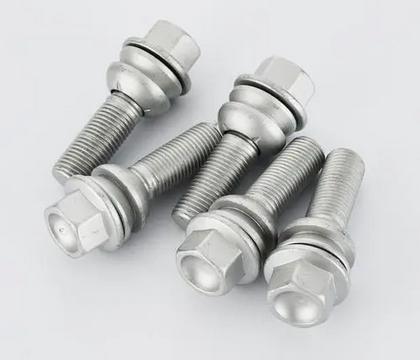Tightening and Prevention of Automotive Bolt Connections
Time:2024-10-12 19:57:25 Source:未知 Click:次
In the automotive industry, bolt connections are fundamental to ensuring the structural integrity and safety of vehicles. Proper tightening and effective loosening prevention are critical to maintaining the reliability of these connections. This article will delve into the methods and best practices for tightening and preventing the loosening of automotive bolts, ensuring a secure and durable assembly.
Section 1: The Importance of Bolt Tightening in Automotive Applications
Bolts in automotive applications must withstand vibrations, temperature fluctuations, and various mechanical stresses. Incorrectly tightened bolts can lead to several issues:
1. Structural Failure: Insufficient tightening can cause parts to separate, leading to component failure or even accidents.
2. Wear and Tear: Over-tightening can accelerate wear, leading to premature bolt failure.
3. Noise and Vibration: Loose bolts can cause unwanted noise and increase vibrations, affecting the driving experience.
Section 2: Tightening Techniques for Automotive Bolts
1. Torque Method:
The most common method for tightening bolts is using a torque wrench to apply a specific amount of torque. This method ensures that the bolt is tightened to the manufacturer's recommended specifications.
- Select the correct torque value based on the bolt size, grade, and thread pitch.
- Apply the torque in a smooth, continuous motion to avoid over-tightening or under-tightening.
- Use a torque angle method for additional precision, which involves tightening the bolt to a specific angle after reaching the initial torque value.
2. Turn-of-Nut Method:
This method involves tightening the nut a certain number of degrees beyond the hand-tight position.
- Hand-tighten the nut first.
- Use a wrench to turn the nut an additional specified angle.
- This method is useful for applications where consistent clamping force is required.
Section 3: Loosening Prevention for Automotive Bolts
1. Locking Agents:
Locking agents such as threadlocker, nuts, and washers are used to prevent bolts from loosening due to vibration.
- Threadlocker: Apply a small amount of threadlocker to the threads before assembly. It cures to create a bond that prevents the bolt from backing out.
- Locknuts: Use nylon insert locknuts or prevailing torque locknuts that resist turning once tightened.
- Lockwashers: Split ring or toothed lockwashers provide additional friction to prevent loosening.
2. Torque-to-Yield (TTY) Bolts:
These bolts are designed to stretch when tightened, creating a permanent tension that helps prevent loosening.
- Tighten TTY bolts to a specific torque and then turn an additional angle to achieve the desired stretch.
- Once stretched, TTY bolts should not be reused.
3. Proper Thread Engagement:
Ensuring that the bolt threads fully into the mating part can help prevent loosening.
- Use bolts of the correct length to ensure full thread engagement.
- Avoid over-tightening, which can cause thread stripping and lead to loosening.
Section 4: Maintenance and Inspection
Regular maintenance and inspection are crucial to ensure the continued effectiveness of bolt connections.
- Inspect bolts for signs of wear, corrosion, or damage.
- Check for proper torque by using a torque wrench to verify that bolts are still at the correct tension.
- Replace any damaged or suspect bolts immediately.
Conclusion:
Proper tightening and loosening prevention of automotive bolt connections are essential for the safety and reliability of vehicles. By following the recommended techniques and using the appropriate tools and materials, technicians can ensure that bolted joints remain secure over time. Regular maintenance and inspection will further guarantee the integrity of these connections, leading to a safer and more enjoyable driving experience for all.


